PILBARA‘S STAR
At the conclusion of last month‘s Cat-powered Mack Titan review, Richo offered us a 6900FX Western Star for another used-truck report. This week, he‘d arranged a few journeys out into the desert to collect plant and equipment, as well as a few ironore runs.
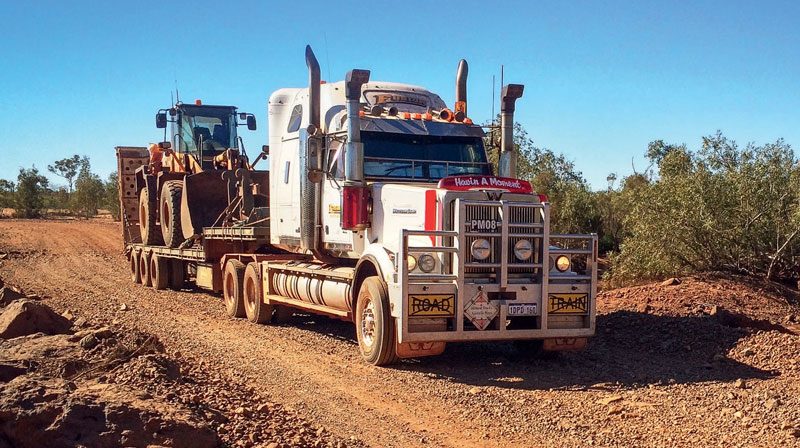
It‘s mid-November in Australia‘s Pilbara region and hints of the wet season‘s arrival are showing regularly in the night sky. For Richo, this signals the start of the busy season. Along with his regular iron-ore cartage contract, he and other operators will urgently try to move plant and equipment from the desert before the roads become impassable due to the weather. In the desert, the mercury soars over 40°C; at night, the temperatures plummet into the single digits. In the hot red dust of Western Australia‘s remote Pilbara, it takes all of 600+ horsepower to pull this 170-tonne payload. Travelling this close to the wet season provides additional hazards for truck operators. Away from the main highways, the bitumen roads are often only 3m wide, and the shoulders very soft. Meanwhile, long stretches of dirt turn into slushy mud, with deep wheel ruts.
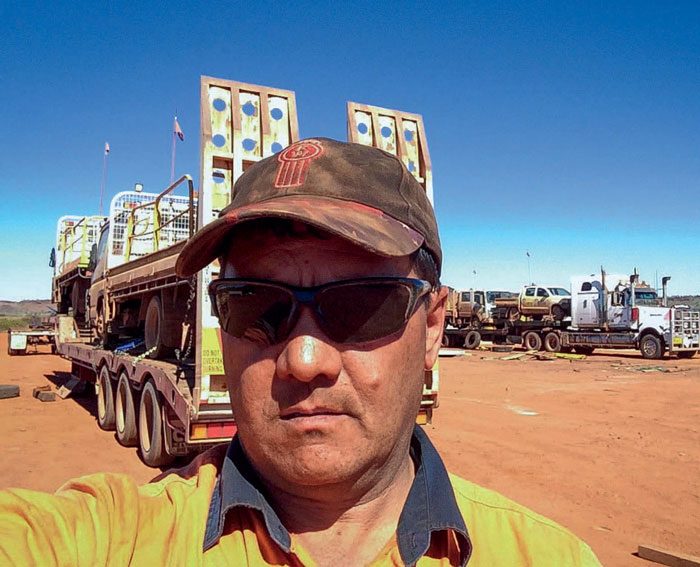
Photo: Excuse the cap… .
Riverbeds, normally dry for most of the year, can suddenly rise metres with raging water without warning. “You ready for a big couple of weeks?” Richo said with a grin when he met me at the airport earlier. “We‘ll get you settled in; and then go and check over the Western Star and its trailers.” Glancing at the Western Star 6900FX 6×4 specifications over a coffee in the crib room, it‘s quickly apparent that it packs some heavy-duty equipment. Upfront, a Cummins Signature, rated at 462kW (620hp), runs through an Eaton RTLO22918B, which sends the power through Meritor RT52-185G final drives with a 4.88:1 ratio. On top of that, it‘s rated for road train work up to 170 tonnes. The interior is extremely well appointed. For longhaul outback operations, the inclusion of the large 68” Stratosphere sleeper was more than adequate. It certainly provided all the creature comforts of home, with an assortment of cabinets, allowing all my freshly ironed clothes to hang neatly. There was also space in the lower cabinets for enough groceries to last more than a week in the bush. Meanwhile, the bed included a decent-quality innerspring mattress. However, the pièce de resistance was the inclusion of the Ecowind bunk air-conditioner.
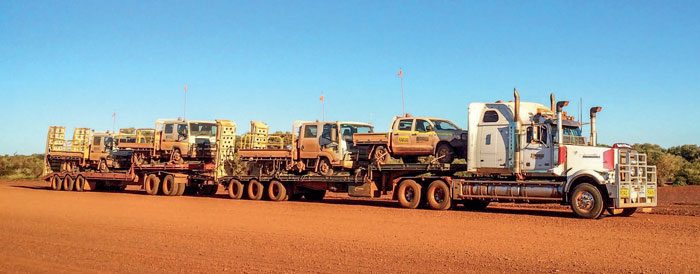
Photo: Vehicles, plant and equipment no strain for the 6900.
By sunset, I‘d connected the quad and tested the operations of all the tippers, checked over the truck and neatly stowed my tools and that spare parts kit I‘d used in the old Titan on the last swing. Finally, I made the bed and then detailed the interior. A couple of hours before sunrise, I turned the key, and the Cummins under the hood leapt to life. I walked around the road train, checking the couplings and lights while the system built up air pressure. Half an hour later, the big 6900 Western Star was well on its way to the Iron Valley Mine site to load iron ore. Twelve and a half hours later, I‘d tipped 109.62 tonnes of iron ore into bunker No9 at Finucane Island, pulled up next to the fuel bowser back at the depot and topped up the two front tanks with 585 litres of diesel. For an EGR Cummins, I was surprised with the economy, which worked out at 1.16km/l for the 679km round trip. The next day, roughly 90km into the trip, the check engine light and buzzer came on. Luckily, there was a parking bay not too far away. After some investigation, I discovered that the warning was signalling low engine coolant. Thankfully, the big Western Star has the header tank conveniently located on the firewall. The tank had plenty of coolant in it, and the fan belt was in good condition so, in theory, the engine should operate correctly. It took me another half an hour, using a process of elimination, to discover that the coolant sensor had failed.
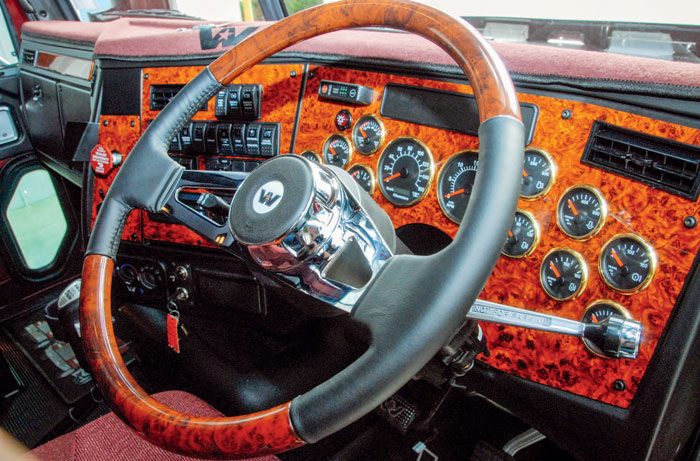
Photo: The 6900‘s dash layout is arguably one of the better arrangements to hit the market, reckons Howard.
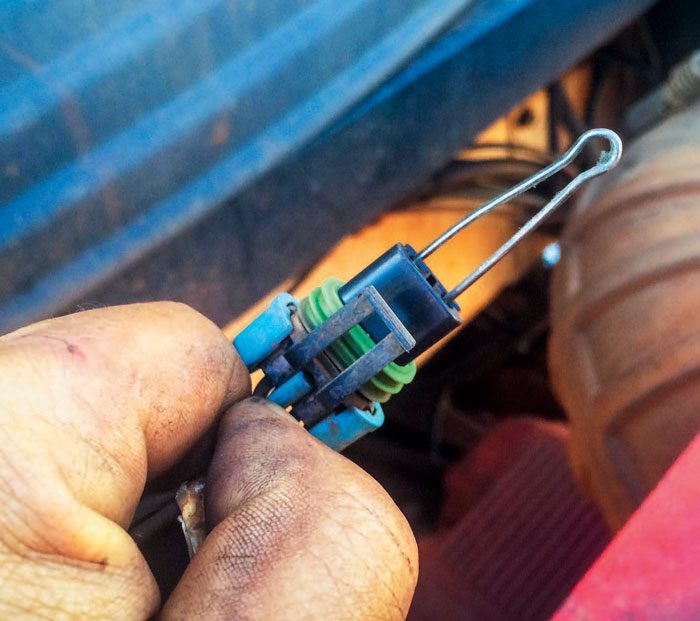
Photo: Howard summons his inner bush mechanic to bodge the coolant-level sensor.
I‘d stowed my breakdown kit in the bunk toolbox. I disconnected the wire to the failed sensor and used a split pin to complete the circuit, wrapped a generous amount of insulation tape around it, then secured it with a cable tie. After packing up my tools, I lowered the bonnet and fired the Cummins once more. Thankfully, my fix worked, and I continued onto the mine for another load of iron ore. Richo met me at the fuel bowser and enquired how my run was and how I liked the 6900 Western Star. He added that he had some bush work for me the next day. “Once you‘ve unhooked the quad set and run the Star over the pit, Rob‘s expecting you,” he said. “He has a new sensor, and the boys will grease and check it over for you. Grab my work ute and head into town and get yourself plenty of tucker and water; you‘ll be out bush for a good week or so if everything goes well.” At daylight the next morning, I set about finding the drop-deck, flat top and dolly Richo had asked me to take. He had a rather extensive list of vehicles, plant and equipment that needed to be collected, returned to Port Hedland and de-hired from worksites dotted along the Roy Hill rail line.
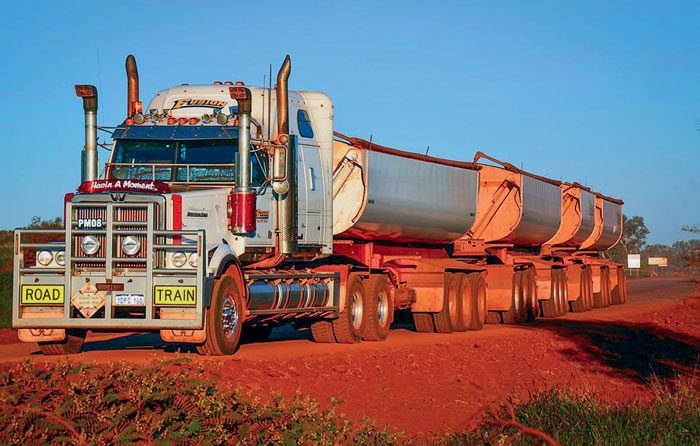
Photo: Almost 110 tonnes in the quad tippers; the 6900 averaged 1.16km/l on a 679km round trip.
Not too far from the Newman T-junction, I veered left and headed east on a well-used dirt road that loosely followed the Roy Hill rail line. As the road deteriorated, it became apparent just how well these big 6900 Western Stars ride. In fact, this truck handles better than most of the used trucks I‘ve tested recently; its road manners are impressive. Because the cabin on the 6900 model sits 85mm higher than a typical highway model, it opens up the area for air to flow around the driveline components. It also means that the cab‘s air conditioner doesn‘t have to work as hard to remove all that additional heat and, up here in the stifling heat of the Pilbara, that‘s a significant asset. In the meantime, a 1570-squareinch, heavy-duty copper/ brass radiator core keeps the 6900 cool, especially when working hard at 100% engine load. This truck only had an oil cooler fitted to the front diff, but even out here pulling 170 tonnes, the diffs only run at about 45°C to 50°C. That‘s terrific especially when you consider that the same diffs on other trucks in the fleet sometimes run up around 90°C to 100°C. I suspect Western Star knew this when it raised the cabin that 85mm. When it comes to cockpit design, the dash layout in the Western Star is arguably one of the better arrangements to hit the market. Gauges are clearly visible and arranged in a configuration that allows you to see them all at a glance.

The switchgear in the 6900 Constellation is another well thought out and functional design addition. The rocker-style LED switches illuminate with active LED indicators when turned on. The LEDs provide improved reliability over conventional incandescent bulbs, which only have a life of 4000 hours compared to the LED‘s 100,000. Each switch uses single multi-pin pushon connectors and integral locking tabs, ensuring secure, fool-proof connections. Complementing the lavish interior on this 6900 is the increased access to the sleeper. The distance between the seats gives the driver the space required to fit in a large fridge and still have ease of access to the bunk. These heavy-duty 6900 Western Stars are indeed built for harsh conditions and come standard with two CR Turbo 2000 air dryers with heaters, and a Cummins 37.4 CFM twin-cylinder compressor. Other standard features on the 6900 include dual 330mm (13”) external stainless-steel Donaldson air cleaners with water-resistant elements, and 152mm (6”) diameter raised ducting and intakes that feed the big 16-litre Cummins plenty of air. It certainly was an exciting couple of weeks roaming around the Pilbara collecting machinery, but what made it so enjoyable was the luxury of the 6900 Western Star and its large 68‘ Stratosphere sleeper.
USED-TRUCK GUIDE
At the time of writing, this truck had 809,501km on the clock with only a mid-life on the engine. It was still running fine, and the engine oil samples were returning normalwear results. You‘d expect to pay between AU$120,000 and AU$190,000 (NZ$127,300 and NZ$201,500) for a big road train 6900 Western Star with 68‘ sleeper. However, trucks like this working on minehaul operations typically have high utilisation, mostly double-shifted. Their maintenance generally is of a high standard to meet all the compliance requirements for hauling mine products. But be aware that haul road grime gets into every component and is time-consuming to clean off. At the end of their life on mine haul, these trucks often require an extensive rebuild to get them back to an as-new condition.
Read more
The sale is on!
0 Comments7 Minutes
Running north
0 Comments13 Minutes
Changing the Game
0 Comments10 Minutes





